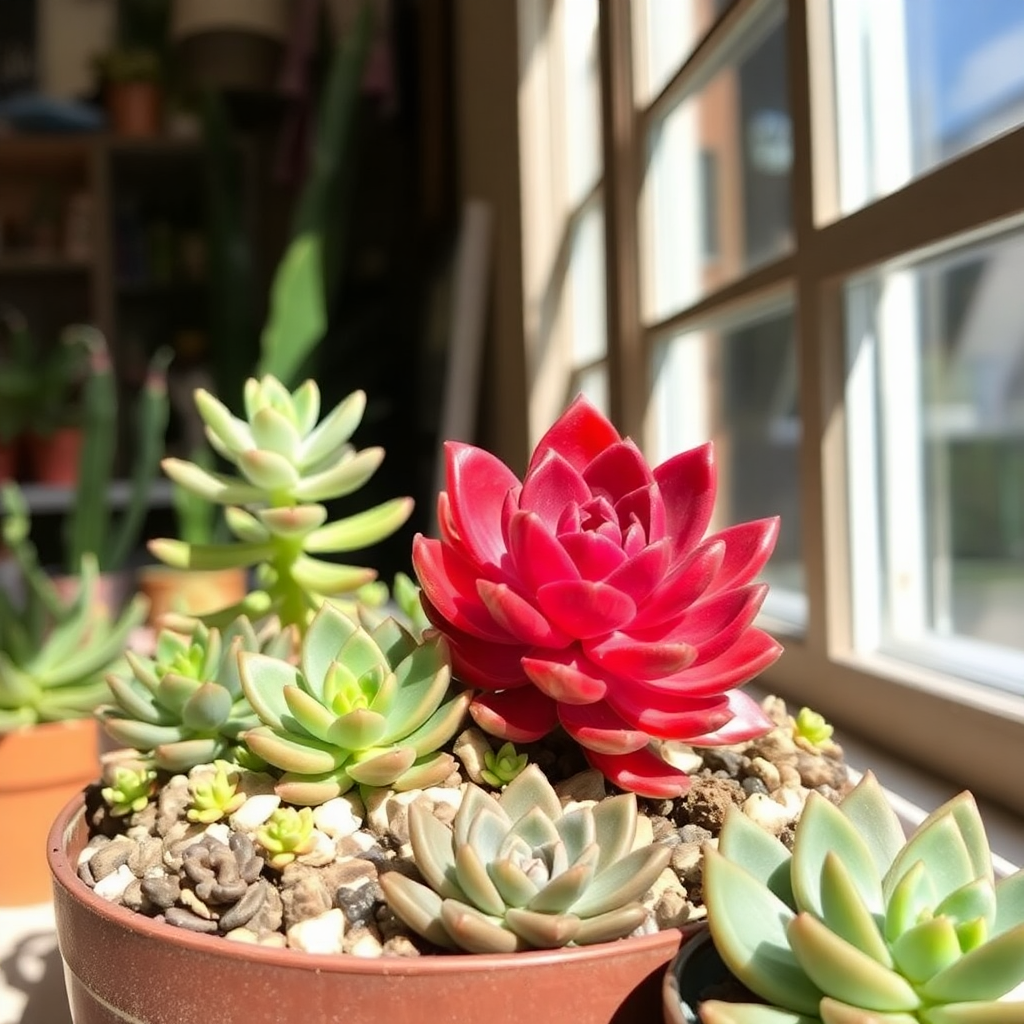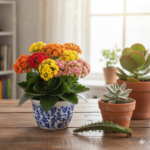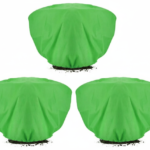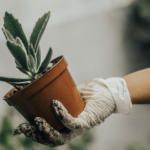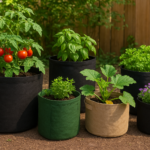Succulents have captured the hearts of plant enthusiasts everywhere, and it’s not hard to see why. With their unique shapes, vibrant colors, and low-maintenance nature, succulents bring a touch of nature’s artistry into our homes and gardens. But one question that often arises is: do succulents require sun? The simple answer is yes—but like many things in nature, the answer isn’t black and white. In this comprehensive guide, we’ll explore the relationship between succulents and sunlight, break down the science behind it, and offer practical tips to ensure your succulents thrive, whether indoors or outdoors.
What Are Succulents?
Succulents are plants that have evolved to store water in their leaves, stems, or roots. This adaptation allows them to survive in arid climates where water is scarce. Their thick, fleshy tissues serve as reservoirs, enabling them to withstand droughts that would leave other plants parched. From the spiky agaves to the rosette-forming echeverias, succulents come in a myriad of shapes and sizes, each with its own unique charm.
Popular Succulent Varieties
There’s a vast variety of succulents available today. Some of the most popular ones include:
- Aloe Vera: Known not just for its soothing properties but also for its ease of care.
- Jade Plant (Crassula ovata): A symbol of good luck in many cultures.
- Echeveria: With its striking rosette form, it’s a favorite in decorative arrangements.
- Sedum: These come in many shapes and are often used in rock gardens and green roofs.
- Haworthia: Small, low-maintenance, and perfect for tabletops.
The Science Behind Succulents and Sunlight

How Photosynthesis Works in Succulents
Photosynthesis is at the heart of any plant’s survival, which converts sunlight into energy. Succulents are particularly fascinating because they use a modified form of photosynthesis known as Crassulacean Acid Metabolism (CAM). This process allows them to open their stomata at night to reduce water loss, storing carbon dioxide for use during daylight. It’s a brilliant adaptation that lets succulents thrive in environments where water is a precious commodity.
The Role of Sunlight in Growth and Health
Sunlight isn’t just about energy; it also influences a plant’s coloration, structure, and overall health. For succulents, the right amount of sunlight can enhance their vibrant hues, encourage compact growth, and promote flowering in some species. However, too much direct sun can cause sunburn, while too little light can lead to leggy, weak plants that struggle to maintain their form.
Do Succulents Require Sun?

Succulents require sunlight, though the amount and type vary. Many succulents thrive in bright, direct sun, while some prefer filtered or indirect light. Adequate sunlight is essential because it fuels photosynthesis, giving energy for growth, vibrant coloration, and overall health. With proper sun exposure, succulents develop rich hues and sturdy forms. However, too much direct sunlight, especially in extreme climates, can cause sunburn, leading to bleached or scorched leaves. It is important to observe each plant’s response and adjust its placement. Indoor succulents may need supplemental lighting or a sunny window, while outdoor ones benefit from shade during peak hours. In essence, succulents do require sun for optimal growth, but their specific light needs depend on the species and natural habitat. By monitoring their exposure, you ensure your succulents flourish in a balanced environment. Gradually adjusting sunlight and providing occasional shade consistently prevents damage and promotes exceptionally robust, healthy growth.
Direct Sunlight vs. Indirect Sunlight
Many succulents flourish in bright, direct sunlight, especially those native to desert regions. However, some varieties prefer indirect light, thriving under filtered sunlight or partial shade. For instance, while a cactus might bask in full sun all day, a jade plant may perform better with a few hours of indirect light to avoid scorching.
Optimal Sunlight Conditions for Succulents
For most succulents, a balance is key. They benefit from several hours of direct sunlight—ideally morning sun which is gentler—followed by a period of indirect light in the afternoon. This combination helps them achieve the right energy levels without risking damage. If you’re growing succulents indoors, placing them near a south or west-facing window usually provides the ideal conditions.
Optimal Sunlight Conditions for Various Succulents
Ideal Light Exposure for Different Species
Different species have adapted to their native environments, and this adaptation influences how much sunlight they need:
- Desert-Dwelling Succulents: Plants like cacti and agaves are built for full, direct sunlight.
- Highland Succulents: Varieties like certain Sedums may thrive with less intense, indirect sunlight.
- Tropical Succulents: Some succulents native to tropical regions may actually prefer filtered light, as intense sun can be overwhelming.
Identifying Your Succulent’s Specific Sunlight Needs
Understanding your plant’s origin is a huge clue to its sunlight requirements. Check the label when purchasing or research the species online to determine its natural habitat. If your succulent starts to look pale or bleached, it might be getting too much sun. Conversely, if it becomes leggy and starts leaning toward the light, it might be desperate for more exposure.
How Much Sun is Too Much?
While succulents thrive on sunlight, there’s a fine line between healthy exposure and overexposure. Excessive sun, particularly during peak afternoon hours, can lead to sunburn, characterized by bleached, scorched, or crispy leaf edges. Even sun-loving succulents can suffer when the intensity of light overwhelms their natural defenses. Typically, a few hours of gentle morning sun followed by indirect light during the day works best. If you notice fading colors or a stressed appearance, it may be a sign that your succulent is receiving too much sun. Adjusting its position or providing temporary shade can help maintain its vibrant health. Balancing direct sunlight with periods of relief is key to ensuring your succulents remain both robust and visually appealing.
Signs of Sunburn and Overexposure
Just like us, succulents can suffer from overexposure. Signs of sunburn include:
- Bleached or faded leaves: A clear indication that the plant’s cells are damaged.
- Crispy or scorched patches: Often seen on the edges or tips of the leaves.
- Discoloration: Leaves may turn a reddish or brownish hue as they burn.
Balancing Light Exposure
The key is to strike a balance. If you notice any of the above signs, it’s a signal to either move your plant to a slightly shadier spot or provide some temporary cover during the peak hours of sunlight. Many succulent enthusiasts use techniques like moving potted plants or employing shade cloths to protect their greens during the hottest part of the day.
Indoor vs. Outdoor Succulents: Sunlight Considerations

Best Practices for Indoor Succulents
Indoor environments often present a challenge: the available sunlight might not always be sufficient. Here are some tips:
- Choose the Right Window: A south or west-facing window can provide the most light.
- Supplement with Artificial Light: LED grow lights can help mimic the natural spectrum of sunlight, ensuring your succulents get enough energy.
- Rotate Regularly: To ensure even growth, rotate your succulents periodically so that all sides receive adequate light.
Outdoor Placement Tips

Outdoor settings are ideal for many succulents, but placement is key:
- Find the Right Spot: Consider the angle of the sun and the intensity of light. A spot that offers morning sun and afternoon shade can be ideal.
- Monitor Weather Changes: Sudden changes in weather, like an unexpected heatwave, may necessitate temporary relocation.
- Consider Microclimates: Even in your garden, some areas might be cooler or shadier than others. Use these variations to your advantage to create a mixed environment that supports various succulent needs.
Seasonal Changes and Sunlight Adjustments
Seasonal changes bring variations in sunlight intensity and duration, making it essential to adjust your succulent care accordingly. During summer, the sun’s rays are stronger and can potentially scorch succulents if they’re exposed to prolonged, direct sunlight. In these months, consider relocating your plants to spots with partial shade during peak hours or using shade cloths to diffuse the harsh light. Conversely, as winter approaches and daylight diminishes, succulents may need extra light to maintain their vibrancy. Placing them near south-facing windows or supplementing with LED grow lights can bridge the gap during shorter, colder days.
Additionally, the cooler temperatures in winter slow down growth, so watering routines should be adjusted to prevent root rot. By monitoring seasonal shifts and making thoughtful adjustments, you can ensure your succulents thrive all year round.
Adapting to Seasonal Light Variations
During the winter months, the intensity and duration of sunlight decrease significantly. Here are some adjustments you can make:
- Move Plants Closer to Windows: This helps capture as much natural light as possible.
- Use Reflective Surfaces: Mirrors or light-colored walls can help bounce additional light onto your succulents.
- Supplement with Artificial Light: In particularly gloomy months, a grow light can ensure your plants receive consistent energy.
Protecting Succulents During Extreme Weather
In addition to seasonal changes, extreme weather conditions—like scorching summers or bitter winters—demand extra care:
- During Hot Summers: Provide temporary shade during peak sunlight hours. This can be as simple as using a sheer curtain or a portable shade.
- During Cold Spells: While succulents generally prefer warmer climates, ensure they’re not exposed to freezing temperatures by moving them indoors or using frost cloths for outdoor plants.
Common Mistakes in Sunlight Exposure
Even seasoned succulent enthusiasts can sometimes misjudge their plant’s needs. Avoid these common pitfalls:
- Overwatering in Direct Sun: When succulents receive a lot of direct sun, they lose moisture quickly. Overcompensating by overwatering can lead to root rot.
- Neglecting Gradual Transition: Moving a succulent from a shaded indoor environment to direct outdoor sun suddenly can shock the plant. Acclimation is key.
- Ignoring Seasonal Adjustments: Failing to modify light exposure with changing seasons can lead to stress and poor plant health.
Practical Tips for Succulent Enthusiasts
DIY Projects to Optimize Sunlight
Get creative with your succulent care:
- Build a Mini Greenhouse: Use a glass cloche to create a controlled environment that maximizes light while retaining moisture.
- Reflector Boards: Place reflective materials around your succulents to direct additional light onto them.
- Custom Shade Structures: Simple DIY shade covers can protect your plants during the hottest parts of the day without completely blocking sunlight.
Troubleshooting Common Light-Related Issues
When things go wrong, don’t panic. Here are some quick fixes:
- If Your Succulent is Leggy: This is a clear sign of insufficient light. Move it to a brighter spot gradually until it adjusts.
- If Leaves Start Discoloring: Check for signs of sunburn. Adjust the light intensity or duration, and monitor watering practices to avoid further damage.
- Slow Growth or No Flowering: Sometimes, a lack of adequate sunlight can hinder blooming. Ensure that your plant is receiving at least a few hours of direct morning sunlight.
.
Expert Advice on Succulent Sunlight Needs
Horticulturists and succulent experts agree that understanding your plant’s natural habitat is the cornerstone of proper care. Many experts emphasize:
- Acclimation is Critical: Gradually introducing your succulents to increased light exposure can help prevent shock and sunburn.
- Observe and Adjust: Each plant is unique. Regular observation and slight adjustments can mean the difference between a thriving succulent and one that struggles.
- Balanced Approach: Remember that while succulents do love sunlight, they also need the occasional break from intense rays to avoid dehydration and damage.
Innovative Tools and Techniques for Sunlight Management
Modern technology offers a wealth of tools to help you monitor and manage the sunlight your succulents receive:
- Light Meters: These affordable devices measure the intensity of sunlight, allowing you to adjust your plant’s placement accordingly.
- Smart Apps: Several smartphone apps can track local sunlight patterns and even remind you when to move your plants indoors.
- Reflective and Absorptive Materials: Experiment with materials that either enhance or diffuse light, ensuring that your succulents get a balanced exposure.
Frequently Asked Questions
FAQ 1: Can I grow succulents in low-light conditions?
Yes, while many succulents prefer bright light, some varieties are more adaptable to lower light. However, they may become leggy or produce fewer blooms.
FAQ 2: How do I know if my succulent is getting too much sun?
Watch for signs like bleached, crispy leaves or a change in color. If the leaves start to show brown spots or become overly dry, it might be time to reduce sun exposure.
FAQ 3: Is direct afternoon sun harmful for succulents?
It can be, especially for species not adapted to intense, prolonged sunlight. Many experts recommend morning sun combined with afternoon shade to protect the plant.
FAQ 4: What’s the best way to acclimate a succulent to full sun?
Gradual exposure is key. Start with a few hours of morning sun and slowly increase exposure over a couple of weeks to allow the plant to adjust without shock.
FAQ 5: How can I improve indoor light for my succulents?
Place them near a bright window or consider using an LED grow light designed for indoor plants. Rotating your succulents every few days helps ensure even light exposure.
Conclusion:
In summary, succulents do require sunlight—it’s a fundamental component of their survival and vibrant appearance. However, just as with any delicate balance in nature, it’s not a matter of simply exposing them to as much sun as possible. Understanding the unique needs of each variety, the benefits of both direct and indirect light, and the potential risks of overexposure will help you create an environment where your succulents can flourish.
Remember, successful succulent care is a blend of science and art. Monitor your plants, adjust their light exposure based on seasonal and environmental changes, and don’t be afraid to experiment with different setups. Whether you’re a seasoned succulent enthusiast or just starting out, these insights and tips will guide you toward creating a thriving green space that’s both beautiful and sustainable.
As you fine-tune your approach, keep in mind that each succulent is unique—what works for one might not work for another. Embrace the learning process, and soon you’ll be enjoying a collection of healthy, vibrant succulents that are a testament to your care and attention.

